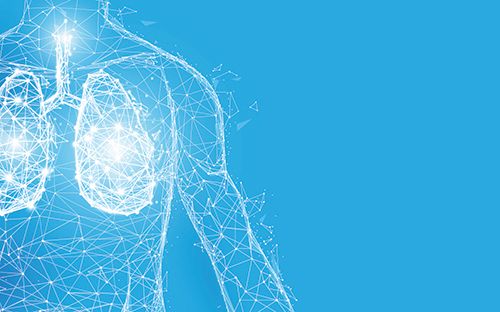Tuberculosis Diagnosis Using GC×GC–TOF-MS
The Column spoke to Jane Hill from Dartmouth College, USA, about her group’s development of a breath analysis method for tuberculosis diagnosis using multidimensional GC×GC–TOF-MS.
Photo Credit: pickup/stock.adobe.com

The Column spoke to Jane Hill from Dartmouth College, USA, about her group’s development of a breath analysis method for tuberculosis (TB) diagnosis using multidimensional gas chromatography–time-of-flight mass spectrometry (GC×GC–TOF-MS).
Q. Your group has developed a breath analysis method for tuberculosis (TB) diagnosis using multidimensional gas chromatography–time-of-flight mass spectrometry (GC×GC–TOF-MS) (1). How did this research come about and why did you think that GC×GC would be the best technique to use?
A: Several years ago, my team decided to emphasize infectious diseases of the lung. According to the World Health Organization, tuberculosis kills about 1.7 million people each year and infects over 10.5 million annually, making it the biggest infectious disease killer in the world. Diagnosing TB is challenging, particularly in patients with an HIV coâinfection and in children, because the population cannot easily cough up the lower lung sputum sample needed for current diagnostic systems. We realized we could deploy our analytical, microbiological, and clinical experience to this global health epidemic.
Q. How do you collect the samples for breath analysis? Are there any precautions you need to take when collecting samples for breath analysis?
A: Our group and others have published protocols regarding how to collect breath samples (2). Details found there can guide the reader on which approaches might be most applicable to their application. In general, breath is collected onto thermal desorption tubes and then hermetically sealed and stored at 4 °C before being run on an instrument. Personal protective gear is required when sampling potentially infectious patients, though typically no more than what is required working in a biological safety level 2 (or equivalent) laboratory. When working with patients who might have tuberculosis, face masks are worn. We also have to be careful not to potentially infect patients who are immunocompromised, so often our personal protective gear is worn just as much to protect the patient as the sampler.
Q. What does this method offer over existing methods?
A: Untargeted analysis demands the best peak capacity possible, which GC×GC–TOFâMS provides. Thus, it became necessary for me to invest in this instrumentation. Along with the instrument and the associated software came the internal development of software tools to manage the immense data produced. So, on the one hand, the instrument reveals 2–10 times more features compared to one-dimensional systems, however, the bioinformatics required to process the data is, accordingly, at least an order of magnitude higher.
Q. What advice can you offer to other scientists thinking of implementing GC×GC in their research?
A: Comprehensive chromatography is superior to single-dimension analysis for biomarker discovery. It is well worth ascending the learning curve so that you can comfortably use such a helpful tool. Study design and becoming proficient at bioinformatics is essential to generate the best data and make the best use of your datasets, respectively.
Q. Are there any particular challenges associated with untargeted analysis?
A: Untargeted analyses present specific technical challenges. The alignment of twoâdimensional data can be substantially more tricky to do because molecule retention time shifts do not always
coâvary. If you are trying to align thousands of molecules, that can be a bit of a nightmare, requiring the creation of code or working through each chromatogram by hand (and you probably always want to do the latter). Reducing the dimensionality of data is the other major challenge to overcome. Statistical evaluation coupled with the use of machine-learning tools is one way to navigate that issue.
Q. Were there any results that surprised you?
A: Absolutely! Comprehensive chromatography has revealed new compounds, some of which have become putative biomarkers for various infectious diseases. Reverse engineering their possible origin-a slower process than biomarker discovery-has led to remarkable insights into infectious disease pathogenesis, even though we have only just touched the surface of that part of our scientific enterprise.
Q. Is breath analysis using chromatography currently being used in clinical practice?
A: Not much. The field is still somewhat young in terms of clinical translation. Nitric oxide in breath is used to diagnose asthma, but there are instruments that cater specifically to that molecule. Helicobacter pyroli can also be diagnosed by a breath test, but again, with an instrument specifically measuring carbon dioxide. There are some ongoing clinical trials for breath analysis in the infectious diseases area as well as various cancers, however, the results of these are not yet known.
Q. What is your group working on at the moment?
A: Mostly we are targeting the dominant lung infections caused by bacteria, viruses, and fungi, including tuberculosis, of course. We are currently conducting four clinical validation studies of candidate breath biomarkers.
References
- J.E. Hill et al., Journal of Chromatography B1074–1075, 46–50 (2018).
- M. Beccaria, C. Bobak, B. Maitshotlo, T. Mellors, G. Purcaro, F. Franchina, C. Rees, M. Nasir, A. Black, and J.E. Hill, Journal of Breath Research 13(1), 016005 (2019).

Jane Hill is an Associate Professor at Dartmouth College. She has a Ph.D. from Yale University.
E-mail:jane.hill@dartmouth.edu

Determining the Effects of ‘Quantitative Marinating’ on Crayfish Meat with HS-GC-IMS
April 30th 2025A novel method called quantitative marinating (QM) was developed to reduce industrial waste during the processing of crayfish meat, with the taste, flavor, and aroma of crayfish meat processed by various techniques investigated. Headspace-gas chromatography-ion mobility spectrometry (HS-GC-IMS) was used to determine volatile compounds of meat examined.

.png&w=3840&q=75)

.png&w=3840&q=75)



.png&w=3840&q=75)



.png&w=3840&q=75)









